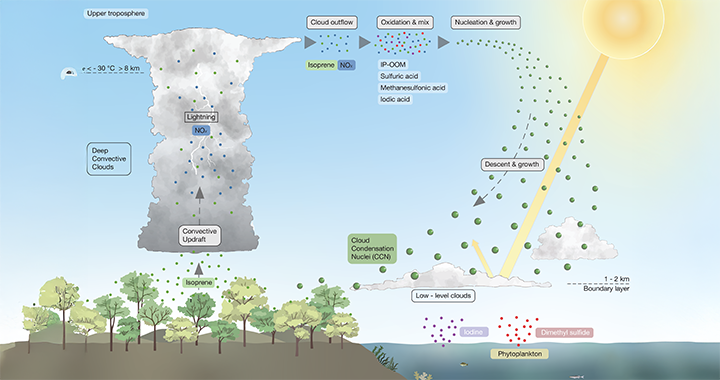(Synopsis generated by AI and checked by human)
A study led by researchers at the University of Helsinki, including members of the Helsinki Institute of Physics (HIP), has revealed a new mechanism for atmospheric particle formation, particularly relevant to the upper troposphere over tropical rainforests. The study, published in Nature, focuses on isoprene, an abundant hydrocarbon emitted primarily by vegetation. While isoprene’s role in particle formation was previously thought to be insignificant, the research demonstrates its ability to drive rapid particle formation under upper-tropospheric conditions.
The study involved experiments conducted in the CLOUD chamber at CERN, where researchers investigated the formation of new particles from isoprene under conditions mimicking the upper troposphere, including temperatures below -30°C. The researchers explored the influence of various factors, such as temperature, the presence of trace acids, and nitrogen oxides, on the process. Their findings suggest that the synergistic interaction between IP-OOMs and trace atmospheric acids plays a crucial role in driving particle formation in these environments.
For more information
Shen, J., Russell, D.M., DeVivo, J. et al. New particle formation from isoprene under upper-tropospheric conditions. Nature 636, 115–123 (2024). https://doi.org/10.1038/s41586-024-08196-0
Rainforest emissions linked with new particle formation at high altitudes (University of Helsinki)
Helsinki Institute of Physics, CLOUD project

